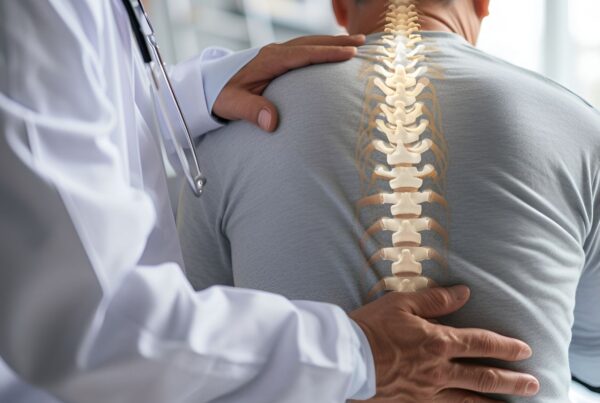Spinal fusion surgery often marks the beginning of a transformative healing journey, offering lasting relief from chronic back pain and leg pain. Whether addressing conditions like scoliosis, stenosis, herniated discs, spondylolisthesis, or fractures. Understanding your recovery timeline helps set realistic expectations and supports the healing process. Working with experienced specialists like Neurosurgeons of New Jersey ensures expert guidance throughout each phase of this important process.
Timeline-Based Recovery Phases
Immediately After Surgery
Spinal fusions are sometimes outpatient procedures, depending on recovery. If a hospital stay is required, it typically lasts 1to 2 days. During which time medical staff carefully manage your pain through a combination of approaches. These comprehensive pain management strategies help you participate in essential early mobility activities.
Physical therapists will begin working with you within 24 hours of surgery, teaching you how to move in a way that limits your pain while protecting your spinal fusion. You’ll learn safe techniques for getting in and out of bed, transitioning from sitting to standing, and walking with proper posture. Usually, bracing is not necessary, as the instrumentation placed during surgery provides adequate stability.
Initially, your medical team will emphasize strict precautions against bending, twisting, or lifting – movements that could exacerbate pain and, theoretically, can compromise the developing fusion. These restrictions, while challenging, play a vital role in the beginning stages of your recovery
It's time to get back
to doing what you love.
1–4 Weeks Post-Surgery
The first month after surgery involves a balance of rest and a gradual increase of activity. Walking becomes your main form of exercise, starting with short distances inside your home and progressively extending as your stamina improves.
Learning proper body mechanics becomes essential during this phase. Your surgical team will provide specific guidance on maintaining a neutral spine position throughout your daily activities. You’ll also discover comfortable sleeping positions, often using supportive pillows and recliners to maintain proper alignment. Bending and sitting require careful attention to posture, and lifting remains restricted to items weighing less than 8-10 pounds.
Most patients rely heavily on family and friends during this period for tasks like meal preparation, laundry, errands, and other household activities. By the end of week two or three, most begin transitioning from stronger pain medications to milder prescription pain medicines or over-the-counter options under their doctor’s supervision. This marks “turning the corner” in your recovery.
1–3 Months Post-Surgery
During these pivotal months, your vertebrae begin growing towards each other, eventually fusing together to create one solid block of bone. While this internal healing progresses, you’ll begin to liberalize your movements, but continue to avoid strenuous activity and lifting heavy weights, especially while in the process of bending or twisting.
Outpatient physical therapy is an important part of recovery, with therapists designing personalized exercise programs that respect your surgical precautions while advancing healing. These sessions focus on restoring proper movement patterns and building core muscle strength to support your spine. Your surgeon will prescribe outpatient physical therapy when he/she feels you are ready. Typically, this occurs 3-6 months after surgery.
Patients gradually resume driving as soon as they are off of prescription pain medication. Regular walking is advised; the weight of your body actually helps grow bone! Walking is also good for you from a cardiovascular and digestion standpoint. Your physical therapist will help you establish a consistent walking program that progressively challenges your endurance without overtaxing your healing spine.
3–6 Months Post-Surgery
This period marks a transition to more active recovery as your fusion continues to strengthen. Focus shifts to rebuilding muscle tone, strength, and flexibility through targeted exercise programs. Your physical therapist introduces more challenging exercises while carefully monitoring your response to increased activity.
For those planning to return to physically demanding jobs, specialized work-conditioning programs help prepare your body safely. While high-impact activities remain restricted, you’ll notice your overall mobility and strength continue improving steadily.
6–12 Months Post-Surgery
During follow-up visits, imaging studies are often used to check that the fusion is progressing as expected. Your activity levels continue to increase gradually, with careful reintroduction of more demanding movements. While you’ll still avoid things like extreme sports, most daily activities become manageable with proper body mechanics.
Your surgical team will monitor your progress closely, addressing any residual nerve-related symptoms that might require ongoing attention. Most patients report significant improvements in their pre-surgery symptoms by this stage, though the healing process continues.
1–2 Years Post-Surgery
Most patients achieve full recovery within this timeframe, resuming most regular activities with proper precautions. Cases involving nerve damage may require up to two years for complete healing, but patients typically experience progressive improvement throughout this period. Long-term success depends on maintaining spine health through consistent exercise and healthy lifestyle choices.

About Ridgewood
Our team of board certified physicians, located in Ridgewood, New Jersey, are dedicated to bringing you the latest developments and treatment options for spinal surgery. We strive to produce the most clarified & clear content to help you make informed decisions on your medical journey. The road to feeling like your true self should not feel lonely- Let us help you. Please call us to schedule a consultation and speak to one of our team members.
Recent Posts:






